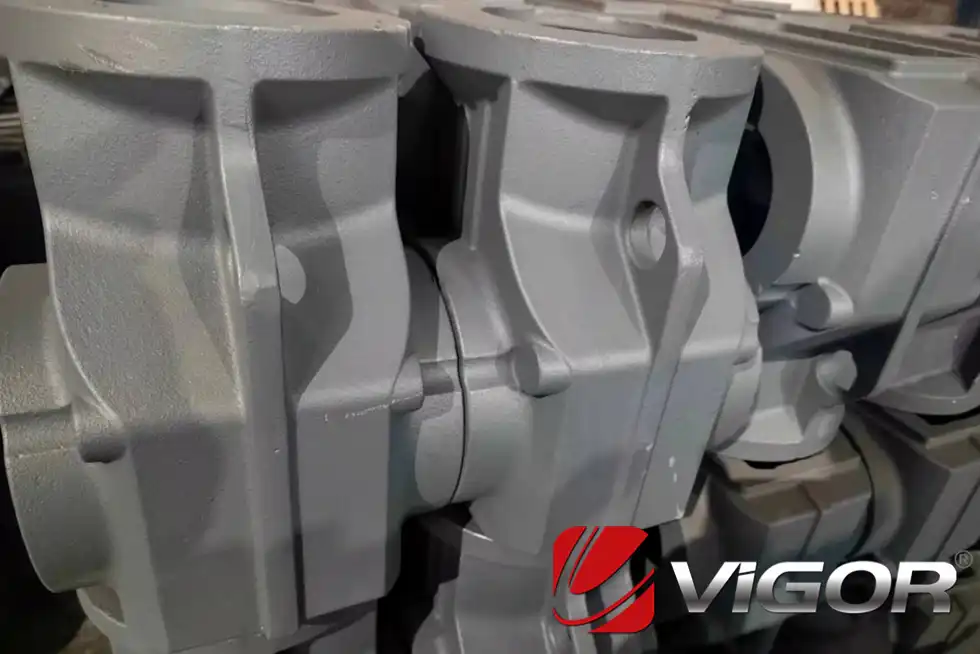
Knowledge
How to Extend The Working Life of The Reducer Housing and The Maintenance Measures
To enhance the service life of the reducer housing and carry out proper maintenance, the following aspects can be considered to ensure the stability and efficiency of the reducer during long-term operation.
I. Methods to Increase the Service Life of Reducer Housing
1. Select High-Quality Materials: When manufacturing the reducer housing, choosing materials with high strength, corrosion resistance, and wear resistance is crucial. High-quality alloy steel or high-grade cast iron not only have excellent mechanical properties but also remain stable in harsh environments. By selecting the right materials, the fatigue resistance and aging resistance of the housing can be fundamentally enhanced, ensuring it does not crack or deform easily during long-term use.
2. Optimize Structural Design: A reasonable structural design is key to extending the service life of the housing. During the design process, stress distribution should be fully considered to avoid stress concentration. For instance, adding reinforcing ribs to weak areas of the housing and using rounded corners to reduce stress concentration points can significantly improve the housing's load-bearing capacity and resistance to deformation, ensuring its stability under complex working conditions.
3. Strictly Control the Manufacturing Process: Every step in the manufacturing process directly affects the quality of the housing. From casting, and forging to welding, each step must be carried out strictly in accordance with process standards. During casting, ensure the material is uniform and avoid internal defects; during forging, control the temperature and pressure to ensure the density of the material structure; during welding, pay attention to the quality of the weld seam to prevent cracks or pores. Through meticulous manufacturing management, ensure the housing is free of defects internally and has a smooth surface, thereby significantly extending its service life.
II. Maintenance Measures for Reducer Housing
1. Regular Cleaning: Regular cleaning of the reducer housing and its internal components is the basic maintenance work. Especially for friction parts such as gears and bearings, dirt and dust can accumulate easily, affecting normal operation. Regular cleaning not only keeps the interior of the housing clean but also enables timely detection of potential wear or corrosion issues, allowing for prompt measures to be taken, thereby extending the service life of the housing.
2. Lubrication Maintenance: Lubrication is a key link to ensure the normal operation of the reducer. Regular application or addition of lubricating oil ensures that the friction surfaces of all components are adequately lubricated, effectively reducing friction and wear, lowering operating temperature, and preventing the housing from deforming or damaging due to overheating. At the same time, regularly check the oil level and quality of the lubricating oil. Once it is found to be aged or contaminated, it should be replaced promptly to ensure lubrication effectiveness.
3. Check Fasteners: During operation, the bolts and screws on the housing of the reducer may loosen due to vibration. Regularly inspect the status of these fasteners and tighten them promptly if found loose. This can effectively prevent vibration and noise caused by loosening and avoid damage to the housing due to uneven force, ensuring the overall stability of the reducer.
4. Monitor Operating Status: Install temperature sensors, vibration analyzers, and other monitoring equipment to monitor the operating status of the reducer in real-time. Once high temperatures or abnormal vibrations are detected, stop the machine immediately for inspection, identify the root cause of the problem, and eliminate the fault to prevent small problems from escalating into major ones, thereby protecting the housing from damage.
5. Avoid Overloading: During use, the load on the reducer should be reasonably controlled to avoid prolonged overloading. Overloading not only accelerates the wear of components but also may cause the housing to deform or crack due to excessive force. Through scientific scheduling and reasonable load distribution, ensure the reducer operates within a safe range, extending the service life of the housing.
In conclusion, through the selection of high-quality materials, optimization of structural design, strict control of the manufacturing process, as well as regular cleaning, lubrication maintenance, inspection of fasteners, monitoring of operating status, and avoidance of overloading, the service life of the reducer housing can be significantly increased, ensuring its long-term stable operation. These maintenance measures not only help extend the equipment's lifespan but also improve production efficiency, reduce maintenance costs, and create greater economic benefits for enterprises.
If you have any questions, demand, related parts development or improve your supply chain, please feel free to contact us atinfo@castings-forging.com




